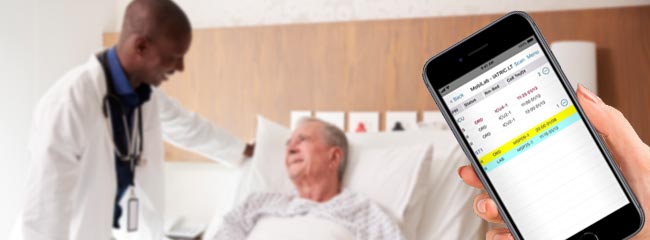Written by Gere Acevedo, Account Manager - iatricSystems

When discussing barcode specimen collection and proper patient identification (PPID), patient safety often drives the conversation. Considering that lab results determine up to 70 percent of treatment options, it is imperative that all specimen labels are labeled correctly with the proper patient identification.
As a clinician, you likely already know the importance of PPID, so let’s build on this discussion. During the iatricSystems Spring Exchange, we delved into the why and how hospitals are using barcode specimen collection tools to find new opportunities for return on investment (ROI) beyond patient safety.
Here’s a quick recap of the session MobiLab ROI: Benefits of Barcode Specimen Collection. If you’d like to watch the session in its entirety or view other sessions from our three-day virtual event, please reach out to info@iatric.com to receive the links.
Improve STAT turnaround times
Phelps County Regional Medical Center in Missouri studied Order to Collection times for HGB and Na tests and saw a 32 to 40 percent improvement following barcode specimen implementation. Before MobiLab, their order to collection time ranged from 22 to 28 minutes and dropped to 15 to 17 minutes within the first month of implementation.
Similarly, Doctors Community Hospital in Maryland studied Ordered to Receive times in the lab. They documented 24 to 31 percent improvement after barcode specimen implementation. Some of the factors that they contribute to their success include:
Pam Stehmer from Doctors Community Hospital shared, “Once the nurses realized that there was a much quicker way than going into the medical records for each of their patients, they bought in immediately and our whole hospital is now on MobiLab throughout the facility; ER, Lab, Medical, Surgery, Pre-op recovery, everyone uses it.”
Increase revenue with faster result turn-around times
In the Advanced for Medical Laboratory Professionals publication, Kelly Feist said that the ROI at a sample hospital following implementation of barcode collection showed that by reducing test result turnaround times from 65 minutes to 46 minutes and taking advantage of the added capacity, the hospital netted over $1,000,000 in annual incremental revenue. She also noted that by reducing the length of stay per patient in the ED and increasing capacity, the hospital would also net over $260,000 and annual incremental revenue.
Karen Ham from Willamson Medical Center recalled an incident where the collection results from a different patient were sent with the wrong patient. This mix-up impacted the patient’s kidney function and increased length of stay for an additional ten days, which could have been avoided if a barcoding tool was implemented. Karen said, “So beyond clinical issues, additional associated costs arise when there are labeling mix-ups.”
Unlock new departmental efficiencies
A study reported in the Advanced Healthcare Network publication that illustrated the workflow efficiencies gained with barcodes specimen collection for phlebotomist travel time. Before barcode specimen collection, phlebotomist spent an average of 15 minutes per hour each on travel. After implementing barcode specimen collection, their travel times dropped to six minutes per hour, giving them a 60 percent reduction in travel time.
“Our phlebotomists are able to stay out on the floors,” said Robin Currier of St. Joseph Hospital. “They are notified real-time when new orders are added, and it allows us to have a more efficient use of our staff.”
Barcode specimen collection is more than patient safety and can provide a real return on investment for various departments within a healthcare organization. If you’d like to learn more about MobiLab or want to watch more on-demand sessions from the iatricSystems Spring Exchange, you can email us at info@iatric.com.